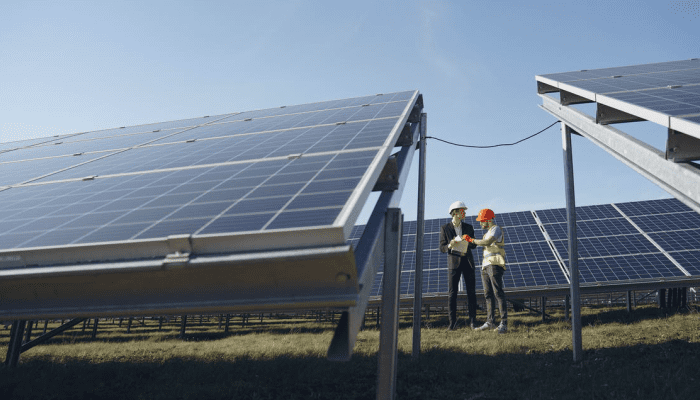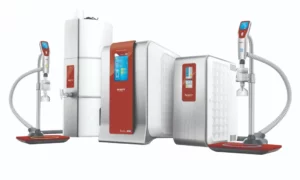Air pollution is a global health hazard, with poor air quality causing an estimated 4.2 premature deaths in a given year – as reported by National Geographic. Inhaling air pollution can wrest between one and two years off a human’s life, although this is only one of many environmental problems faced by the blue planet. Additional threats include the proliferation of plastics, scarcity of food, and excess waste as a whole. How are new technologies aiming to solve these issues?
Carbon Dioxide-Eating BioSolar Leaf Panels
Imagine if unused roof spaces in industrial and even residential buildings could be used as supports for panels that absorb CO2 and release oxygen at a 100 times greater rate than a tree could release. It is already happening, thanks to the work of scientists at Imperial College in London, who are working alongside startup Arborea to develop the planet’s first BioSolar Leaf. The system not only eliminates pollution from the surroundings, but also produces organic biomass, which can be used as food additives for plant-based food items. The project was inspired by London’s high levels of air pollution. In this city, millions of people live at above-legal levels of toxic air. Those living in polluted zones can boost this type of incentive through the use of an indoor air purifier. Air purifiers for smoke containing HEPA filters are particularly efficient because they can trap dirt as tiny as 0.3 microns in size. These filters are particularly indicated in homes inhabited by people with allergies and other respiratory ailments.
Reducing Waste
Many industry leaders are showing the extent to which waste can be reduced through recycling technology. The aerospace industry, for instance, is relying on 3D technology to print titanium for engines and frames. Titanium is a 100% recyclable material, so the only way is up with this metal. Another new technology revolves around edible packaging. The frontrunner in this sphere is seaweed, as it is high in vitamins and fiber, and can be converted into packaging without resorting to chemicals. The movement is being spearheaded by startups like Notpla, which has already created an ‘edible bubble of water’. Just stick the bubble in your mouth and consume the packaging after you have enjoyed a little hydration. If you don’t want to eat the packaging, just throw it away. It is 100% biodegradable, and will take less than six weeks to disappear on its own.
Fighting The Plastic Invasion
Plastics are one of our ocean’s biggest enemies, and technologies like nanotechnology, genetic modification, and advanced chemical processes are already being developed to reduce the presence of these harmful products in seas, oceans and landfills. Nanotechnology, for instance, is being used to create water-resistant materials that can coat cardboard and other paper packaging to make it more resistant. Nanotechnology is also being used to produce lightweight metals that can take the place of plastics in consumer items such as vehicles or beverage cans. These new metals are created by removing atomic layers via ultra-fine nano lasers. Genetic engineering of plants, meanwhile, can help farmers grow enhanced crops like flax or jute, which can compete with plastics in terms of resilience and weight.
Transforming Waste Water
Water is a scarce resource in many parts of the world, and many cities do not have adequately treated sewage. They continue to discharge untreated water into rivers and estuaries, or use this water to irrigate plants, potentially causing environmental harm. New technologies are being developed to transform waste water. For instance, modular hybrid activated slide digesters are capable of removing useful fertilizers from waste water, reducing the energy required by treatment by 50%. Precision irrigation systems, meanwhile, are being used to water farms more intelligently, based on need rather than seasonal prediction.
The industrial revolution may have begun the environmental onslaught on our planet, but technology is devising many ways to reduce human impact. From precision irrigation to the use of nanotechnology to strengthen cardboard and other biodegradable packaging, new technologies are making it easier for human beings to continue with necessary processes while reducing their carbon footprint significantly. Air pollution continues to be a seemingly insurmountable behemoth, but public and private efforts can go hand in hand to reduce levels of both outdoor and indoor pollution.

































